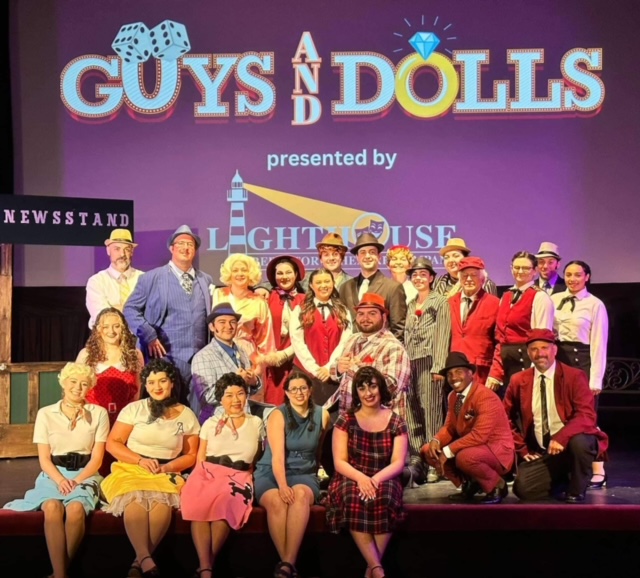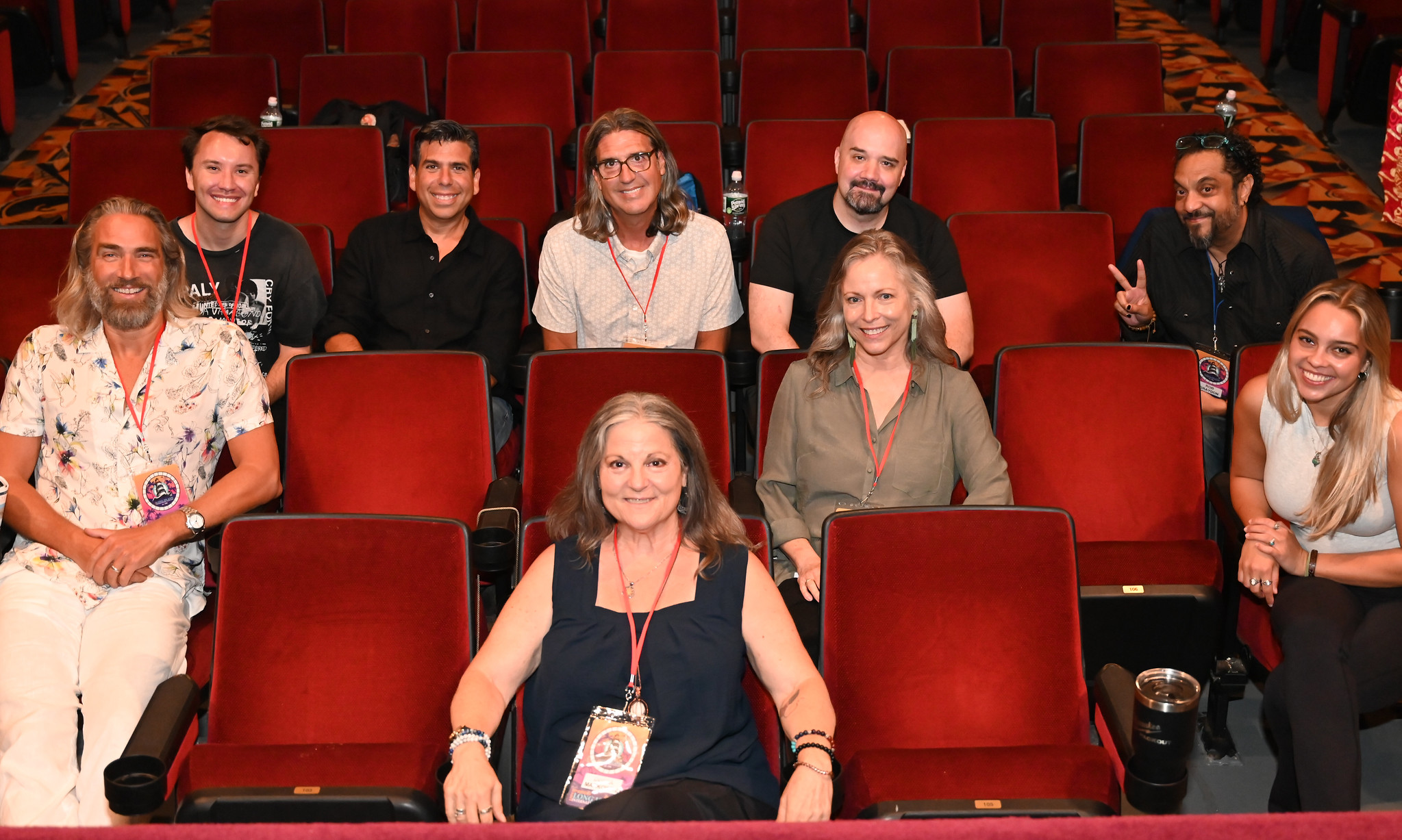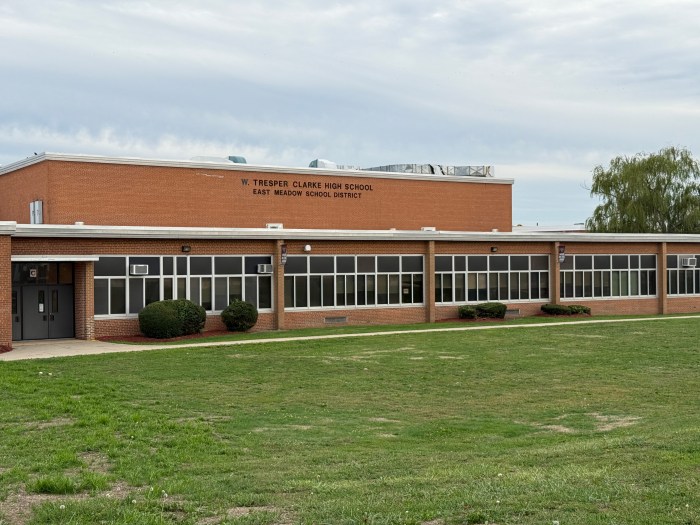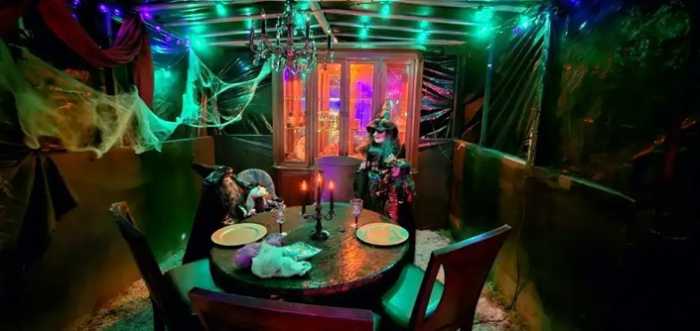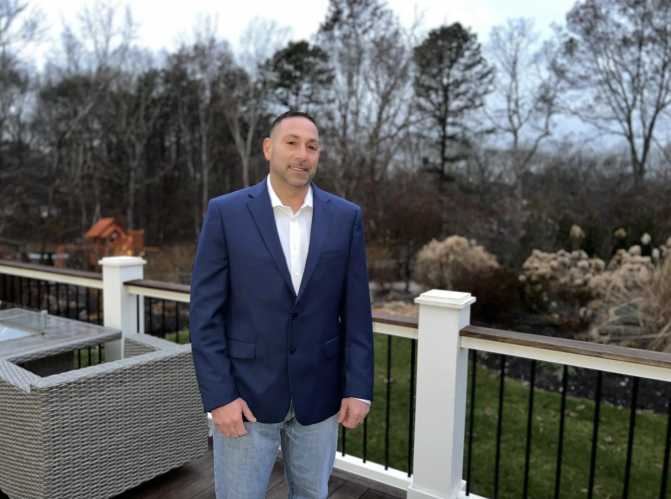It’s a hot Friday afternoon and several dozen people are applauding in Bellmore Movies & The Showplace, the last single-screen cinema in Nassau or Suffolk counties, during the Long Island International Film Expo.
While the applause are for the films, they might also include a touch of recognition for the more-than-a-century-old venue and its operators.
Family-owned Bellmore Movies is a survival story as the last Long Island movie theater with a single screen after so many have been sliced into multiplexes. But Bellmore Movies, owned by Henry and Anne Stampfel, is more than a movie theater. It is also the story of film, a family business, a cinematic couple and simply survival.
Bellmore Movies & Showplace has adapted, presenting events, film festivals, comedy, plays and an idiosyncratic mix of movies to keep seats filled in the age of Netflix. It provides history, longevity, hope and a kind of flickering flame for the film industry along with a stream of typically independently made movies.
“lt’s one of the oldest movie theaters on Long Island,” co-owner Henry Stampfel said recently in the lobby near images of the cinema’s history, surviving wars, Prohibition, two pandemics, many strikes and more.
Its original marquis may be gone (knocked down in a 1999 storm), but the show still goes on at this cinema, near the Bellmore Long Island Rail Road station, just short of 110 years old, with its crimson curtains draped over walls.
“We always loved movies. Who doesn’t?” Anne Stampfel said. “We rarely get to go to a cinema and see a movie. How many of you out there want to go back to where you work when you’re off?”
INDEPENDENCE DAY
Long Island’s independently owned cinemas could give July 4 a new meaning. The Cinema Arts Centre, a Long Island institution in Huntington, is a multi-screen movie house showing a wide range of movies along with appearances by actors and filmmakers.
Meanwhile, the Bellmore Playhouse, Port Jefferson Cinemas, Seaford Cinemas, Sayville Cinemas and many others typically play mainstream movies.
Some cinemas have been closing, however, making the lasting lights of those on Long Island even more meaningful, as survival stories as well as portraits of persistence.
The Long Beach Cinemas, which opened in 1930 and the Stampfels operated from 1985 to 2001 as the Park Avenue Theatre, closed last year.
“Independent cinemas play such a crucial role for both filmmakers and audiences,” said Chalkley Calderwood,” director of Harvey: The Voice for the Voiceless, an 18-minute documentary about former assemblymember and disabled rights activist Harvey Weisenberg that played at the film expo. “They give films with artful and altruistically driven content a hard-won chance to be viewed as an immersive experience.”
The Long Island International Film Expo at Bellmore Movies gave Long Island audiences a chance to see work they wouldn’t otherwise see. Filmmaker Frederick Taylor, Jr., who presented his documentary Pre-Existing Freedom, was happy to show his documentary inspired by his grandmother, born and raised in Memphis, Tennessee, who went from picking cotton to graduating college.
“Something that she really taught me as a person is how to navigate the high seas of life or the difficulties of life,” Taylor said in the Bellmore Movies lobby. “And do it in a succinct, organized, and spirited way.”
CINEMA IN THE AGE OF COVID
Bellmore Movies, the Stampfels and other indies have faced huge challenges, including a pandemic and technology that turned couches into front-row seats. Covid and content problems make the early 2000s seem like a golden age for movie theaters.
“I guess pre-Covid things were pretty good, but Covid trained people to stay home and watch stuff on streaming or their phones,” Anne said in the brightly lit lobby. “It was pretty devastating for us to rely on every grant out there.”
Simply surviving Covid was a leviathan task for indie movie theaters, such as Bellmore Movies, although grants prevented it from going dark.
“It was awful during Covid to be shut down and yet your real estate taxes and rent and insurance remained,” Anne said. “We would go there just to dust and check for mail and make sure all was okay. It broke our hearts. That was the first time in both our lives we ever collected unemployment insurance.”
A Shuttered Venue Operators Grant (SVOG) helped them get back on their feet. Then two strikes hit like a double punch to the gut. “The SAG actor strike and the writers strike cut back production. We’re still waiting for production to get back to speed,” Henry added. “You do the best you can, and find ways of creating content.”
A FAMILY BUSINESS
Bellmore Movies, with an unassuming exterior located near the Bellmore train station, survived the Spanish Flu of 1918, the Great Depression, two world wars, many other wars, and other challenges. But then the Stampfels are truly movie people and movie theater people. Their marriage, it turns out, was made at the movies.
“We met working at the Oceanside Theatre back in 1978,” Anne said. “I took a second job because of the gas crisis and needed the money and my husband was assigned to work there through the projectionist union. During the day I worked for a film booker for cinemas, so I knew that end.”
After working for others, they married and went into business when the Lido Theatre went up for sale, renaming it the Park Avenue Theatre. “When it became available, we gave it a shot,” Anne said.
They took over operations of Bellmore Movies in March 1986 and went on to operate Malverne Cinema & Art Center when it was a multiplex. But they didn’t move Bellmore Movies to the multiplex format.
“Locations started to go multi when things began to get out of hand with real estate taxes and other expenses,” Anne said. “They realized with two or more screens under the same roof you nearly double your income.”
Bellmore Movies, seating a little more than 300, stayed with a different formula, seeking to program carefully, typically without blockbusters, holding down costs. Bellmore Movies charges $10 for adults, $8 for senior citizens 62 and over and children under 12 and $6 on select days and times. They pick, Anne said, tested through early screenings that they think match their audience. “We check into that and do the best we can,” Anne said.
CINEMA COMMUNITY
Bellmore went from silent movies, with a live piano decades ago, to relying on theater and live performances as well as movies. “We bring in live things,” Anne said. “We’ve had comedians, bands, plays for children and for adults and film festivals.”
The cinema also has stage, which lets it present shows such as the Lighthouse Repertory Theatre’s production of “Guys and Dolls,” which played there Aug. 16-18.
“It’s really nice,” Lighthouse Repertory Theatre Co. President Tony Chiofalo said of Bellmore Movies, with no wings or backstage, but a nice stage, seating and screen to project backgrounds. “It really works for us as a theater.”
Bellmore Movies is ADA accessible, well maintained, has a lobby, concession counter and ticket booth. “It’s functional and looks great for our patrons,” Chiofalo said. “This is great for bringing in large crowds of students or seniors.”
HOPE SPRINGS
While Bellmore Movies remains a single-screen cinema, that’s not the case with the Malverne, which the Stampfels also own. Anne started working at Malverne in 1981, leaving when they opened the Long Beach Park Avenue Theatre in 1985. They in 1990 bought the lease for the two-screen cinema.
“We couldn’t sustain it as a twin and decided to go to four screens and a year later added the 5th screen (in 1997) in the empty store next door,” Anne said. “We paid back that investment in about two years.”
The Stampfels said the Malverne has been the site of six marriage proposals and two bridal showers, as well as children’s and adults’ birthday parties. During the pandemic alone, even when it was closed, they say there were two marriage proposals and family reunions.
The Malverne offers a lot of mainstream programming, recently showing Inside Out, Despicable Me 2, and Fly Me To the Moon.
What are some recent hits at Bellmore Movies? A poster for Thelma, showing a grandmother on a scooter, recently graced the lobby, the picture of persistence much like the cinema and its owners. Cabrini, about Francesca Cabrini, was also a hit along with The Sound of Hope: The Story of Possum Trot about a couple and their East Texas church who adopted 77 children from a highly flawed foster system.
“I just try to get good, feel-good movies,” Anne said.
After Bellmore Movies’ marquee tumbled down in a 1999 storm, they decided to stick with a traditional sign that train riders see daily.
“That’s valuable to us,” Anne said.
Bellmore Movies remains a stalwart single-screen, single auditorium, although that could change. The proximity to a train station helps fill some seats and provide some promotion.
The Stempfels, who own the building, have looked at going the nonprofit route. And they hired an architect to design the space with three or four screens, but so far Bellmore Movies remains not untouched, but not entirely transformed, by time.
“For now it’s doing very well with the combination of live entertainment and movies,” Anne said of the little movie theater that, for more than a century, could.




